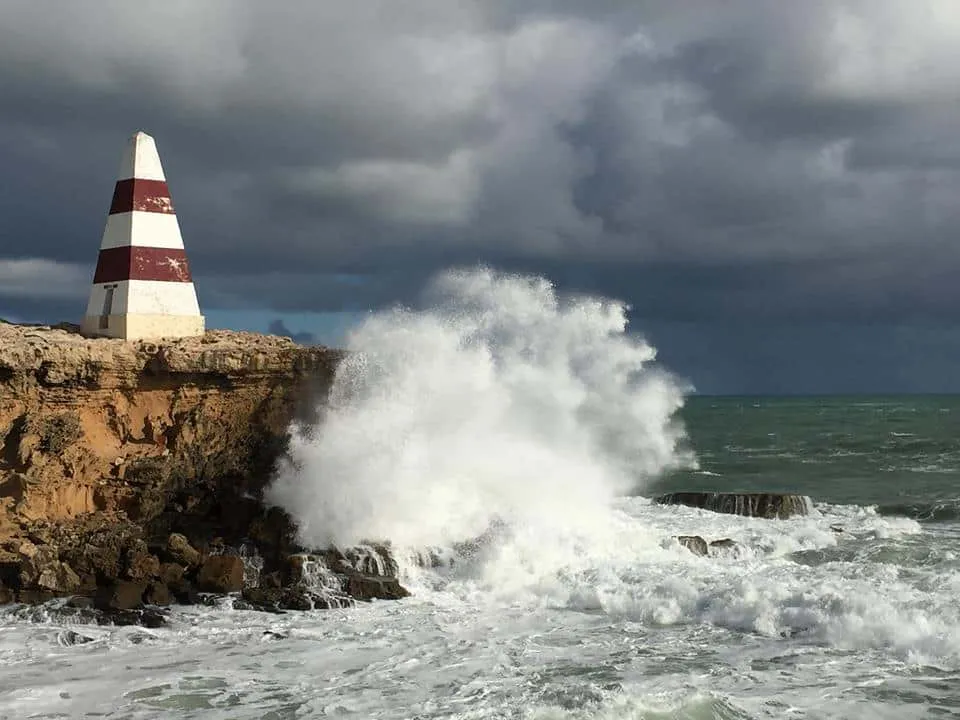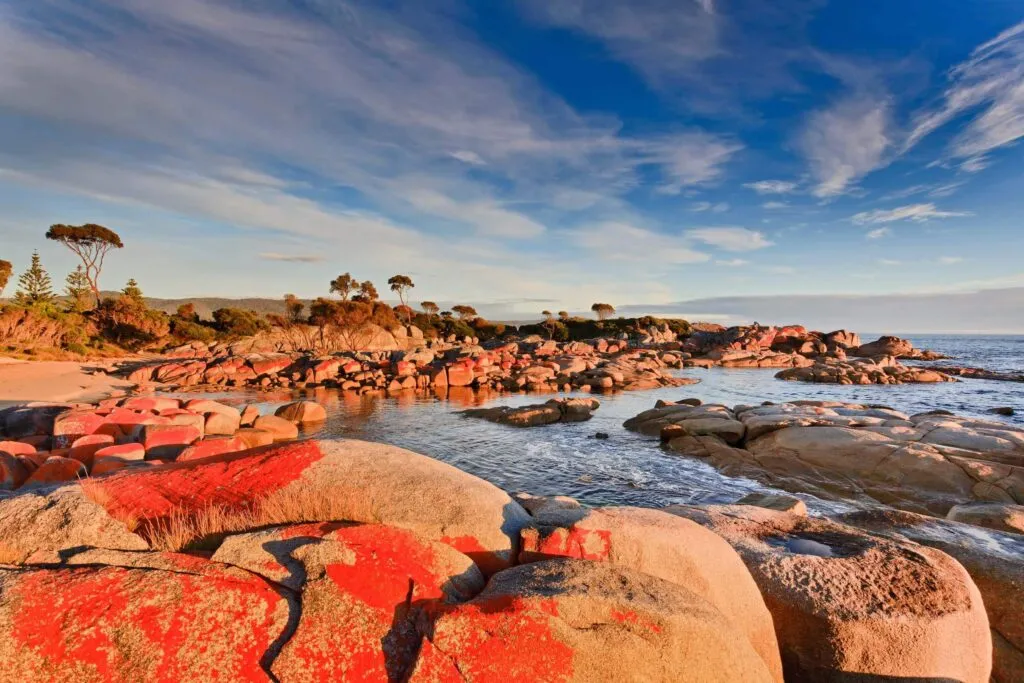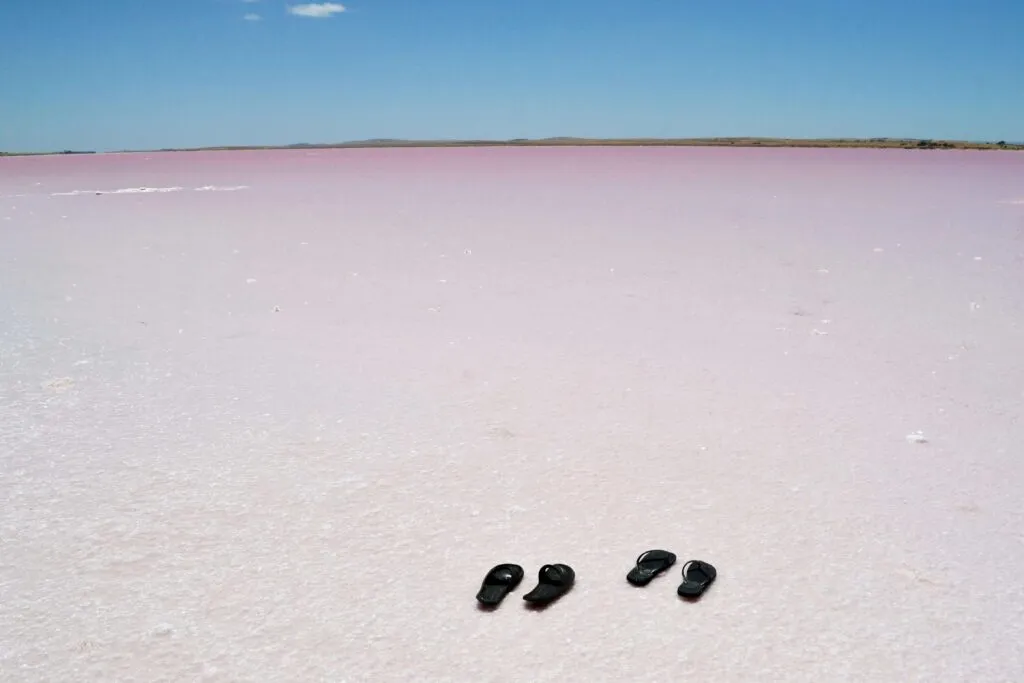Last Updated on August 1, 2018
Uluru, the Great Barrier Reef, Melbourne, Kakadu, Sydney, Phillip Island, the Great Ocean Road – tourists flock to Australia to visit these well-known attractions. But there are so many hidden gems throughout the country that are definitely worth a detour. For an extra special Australian experience, put these lesser-known towns and attractions on your itinerary.
1. Robe, South Australia
Affectionately known as ‘South Australia’s Favourite Seaside Town’, the Limestone Coast town of Robe woos visitors with a surfy, seaside vibe, quirky shops, fine-dining restaurants, and of course, miles of beautiful beaches. The famous Obelisk, with its dramatic red and white stripes, makes an excellent photo as thunderous waves crash against the cliff. Visitors can sip on traditionally brewed, hand crafted beers at the Robe Town Brewery, while wine lovers can indulge in the several varieties of grapes grown on the Limestone Coast region. Plus, depending on the time of year, visitors can enjoy the many festivals held here, such as the Health, Harmony and Happiness festival, the Boat and Fishing show, and Robe Homebrew and Craft Beer Festival.
Don’t miss: A short drive to the nearby town of Kingston SE, where you can see one of Australia’s iconic ‘Big Things’ – Larry the Giant Lobster.
Nearest airport: Adelaide Airport (ADL)

2. Arnhem Land, Northern Territory
Many visitors make the pilgrimage to Australia’s Top End to see the country’s largest land-based national park, Kakadu, and for good reason – the park is full of quintessential Australian bushland and wildlife. But to truly immerse yourself in Australian culture and experience the real Aussie wilderness, you’ve got to pay a visit to the remote Arnhem Land. About the size of the state of Victoria and sculpted by gorges, waterfalls, rivers, rainforest, remote islands and towering escarpments, Arnhem Land is home to its traditional owners, the Yolngu People, and requires a permit to visit. But it’s definitely worth the effort to experience one of the most intriguing, mysterious and least inhabited areas of the world.
Don’t miss: Fishing in the floodplain billabongs and tidal rivers for famous barramundi, giant trevally and golden snapper, through an accredited fishing tour.
Nearest airport: Darwin Airport (DRW)
3. Castlemaine, Victoria
Just a two-hour drive from Melbourne lies Castlemaine, a historic township in the Victorian goldfields. Once a prominent gold-mining town during the early gold rush, Castlemaine is now a gorgeous country destination that has all the amenities of a larger town without losing any of its small-town charm. Think day spas, antiques and collectibles, grand old buildings, tranquil botanical gardens, a burgeoning foodie scene delighting patrons with everything from local cheeses, olive oils and ciders to gourmet fine-dining restaurants, quirky nearby towns, and local artists offering their skills with paintings, sculptures, jewellery, textiles and music. There’s always something new to discover in the Victorian goldfields, and Castlemaine is the perfect place to start.
Don’t miss: A ride on the historic Victorian Goldfields Railway, an authentic heritage steam train which journeys through the scenic bushland between Castlemaine and the quaint gold-mining town of Maldon.
Nearest airport: Melbourne Airport (MEL)
4. Bay of Fires, Tasmania
When we think of the beautifully rugged landscape of Tasmania, a few well-known spots immediately come to mind; Cradle Mountain, Wineglass Bay, Freycinet National Park. They’re popular for a reason, but Tasmania is also home to a lesser-known, but equally spectacular gem – if you want impossibly crystal-blue waters and whiter-than-white sandy beaches with an abundance of marine life, a place so unspoilt that you could easily feel that you were the only person to set foot there, then you need to put the Bay of Fires on your travel list. Granite boulders embellished with orange lichen hug the coastline, and you can opt to walk for miles along the beach, snorkel in underwater caves and scenic reefs, look out for pods of dolphins, go birdwatching or set up camp right on the sand.
Don’t miss: Staying in a remote eco-lodge around nearby Binnalong Bay for a touch of luxury during your stay.
Nearest airports: Launceston Airport (LST), Hobart Airport (HBA)

5. Bungle Bungles, Western Australia
Completely unknown to the outside world until 1983, the Bungle Bungle Range in the remote Purnululu National Park could easily make you feel as though you’ve landed on an alien planet. The stripey, beehive-like sandstone formations undulate across the surrounding grassy plains, rising up to 250 metres above the arid grasslands of the Kimberley region. The Bungle Bungles simply need to be seen to be believed.
Don’t miss: Seeing this impressive sandstone formations from the air on a helicopter or light plane tour.
Nearest airports: Broome Airport (BME), Darwin Airport (DRW)
You might also like: 8 Extraordinary Australian National Parks To Visit
6. Cockatoo Island, New South Wales
Hiding in plain sight among the islands dotting the ever-popular Sydney Harbour lies one of the city’s best kept secrets – Cockatoo Island. This UNESCO World Heritage-listed island is just a short ferry ride away from Circular Quay, and played a pivotal role in Sydney’s convict, ship-building and industrial history. Take in sweeping views of the harbour – some of the best in the whole city – as you learn about the unique history of the island that was off-limits to the public for 100 years.
Don’t miss: Staying here overnight – Cockatoo Island is the only island in the harbour that allows camping. You can bring your own tent and set up camp, stay in one of the tents onsite, try glamping – glamorous camping – on the waterfront, or for a very special experience, stay in one of the Heritage Houses.
Nearest airport: Sydney Kingsford-Smith Airport (SYD)

7. Lake Bumbunga, South Australia
Depending on the time of year, the hues of South Australia’s Lake Bumbunga transition from white to blue to bubblegum pink thanks to its saline levels, making it a favourite spot for photographers. While it’s not the only pink salt lake in South Australia – in fact the state boasts quite a few – Lake Bumbunga does have the added advantage of being an easy two-hour drive from the state capital of Adelaide, and those who venture further north will find themselves in the famous Clare Valley wine region. A pink lake followed by a pink rosé, we’ll toast to that!
Don’t miss: Indulging in some fish and chips flavoured with the salt harvested from the lake.
Nearest Airport: Adelaide Airport (ADL)
Ready to explore Australia beyond the usual tourist jaunts? Once you’ve booked your flights and hotel, don’t forget your airport transfer to ensure a smooth start to your trip. Search and compare airport transfers on Jayride.com.
